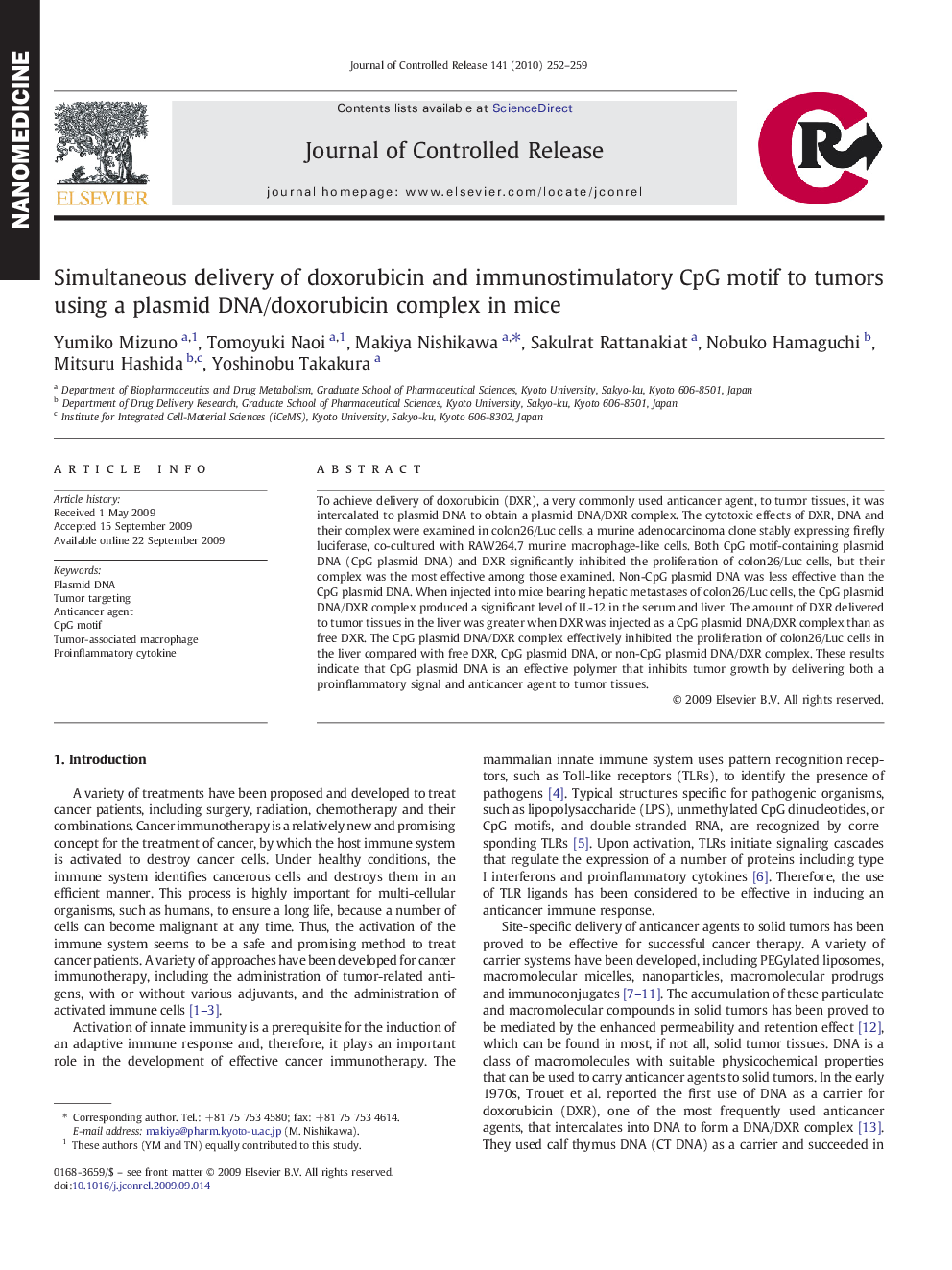| Article ID | Journal | Published Year | Pages | File Type |
|---|---|---|---|---|
| 1426022 | Journal of Controlled Release | 2010 | 8 Pages |
To achieve delivery of doxorubicin (DXR), a very commonly used anticancer agent, to tumor tissues, it was intercalated to plasmid DNA to obtain a plasmid DNA/DXR complex. The cytotoxic effects of DXR, DNA and their complex were examined in colon26/Luc cells, a murine adenocarcinoma clone stably expressing firefly luciferase, co-cultured with RAW264.7 murine macrophage-like cells. Both CpG motif-containing plasmid DNA (CpG plasmid DNA) and DXR significantly inhibited the proliferation of colon26/Luc cells, but their complex was the most effective among those examined. Non-CpG plasmid DNA was less effective than the CpG plasmid DNA. When injected into mice bearing hepatic metastases of colon26/Luc cells, the CpG plasmid DNA/DXR complex produced a significant level of IL-12 in the serum and liver. The amount of DXR delivered to tumor tissues in the liver was greater when DXR was injected as a CpG plasmid DNA/DXR complex than as free DXR. The CpG plasmid DNA/DXR complex effectively inhibited the proliferation of colon26/Luc cells in the liver compared with free DXR, CpG plasmid DNA, or non-CpG plasmid DNA/DXR complex. These results indicate that CpG plasmid DNA is an effective polymer that inhibits tumor growth by delivering both a proinflammatory signal and anticancer agent to tumor tissues.
Graphical abstractFigure optionsDownload full-size imageDownload as PowerPoint slide
